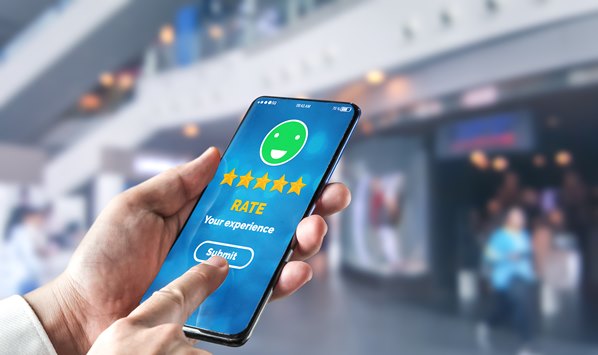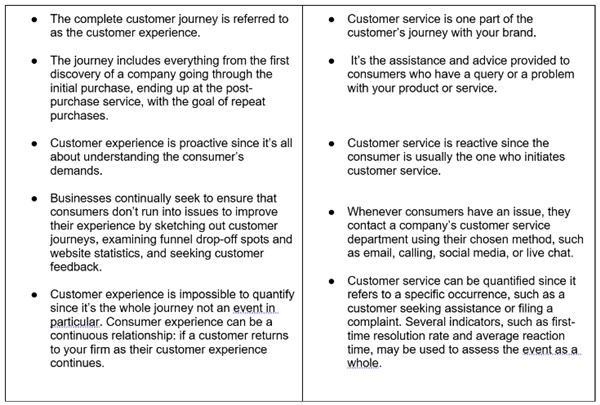
With the rise of new technologies, customers are becoming more aware of their options. Along the process, they are also beginning to demand more incredible experiences.
Customers are now ready to express their dissatisfaction with a firm via internet evaluations, warning others about substandard service. That’s why businesses are realizing that providing excellent customer service is not enough. They need to take a step back and look at the larger picture.
What is Customer Experience?
Customer experience is your customer’s overall impression or opinion of their interaction with your company, from browsing the website to speaking with customer care to receiving the product or service they purchased.
Everything you encounter influences your customer’s perceptions and decisions to return or not. Therefore providing a positive customer experience is essential to your success.
Real-Life Customer Experience Vs Digital Customer Experience:
Customer experience covers all the aspects of the interaction between the customer and the company, whether it’s the experience the customer went through in your store or if he undergoes it through digital means.
The total customer experience includes all the customer’s in-person encounters, such as in-store, through any mass media advertising, over the phone, receipts, or other face-to-face meetings. In contrast, digital customer experience refers to all interactions consumers encounter through digital platforms, including communication, goods, services, and procedures.
Digital Customer experience is considerably simpler to quantify than the experiences in non-digital ecosystems because of the amount of data produced in the digital environment, including cookies, fillable banking, online forms, user databases, and other data analysis techniques. This also allows marketers to personalize the Digital customer experience as they can tailor the content according to the customer’s need.
When it comes to customer experience management, you can check out SlideModel, which helps you ensure that all your team members are on the same page to encounter the weak areas with full support.
Customer’s Journey:
As a business owner, you must first comprehend the customer journey in order to encourage the flow of client experiences and obtain a better grasp of consumer involvement and decision-making. The customer journey includes several touchpoints, which are:
1. Brand’s Awareness
This is the initial stage where the customer comes to know about your brand. Advertising, phone calls, emails, and other advertising platforms make a person aware of a company or brand. Initially, the company’s purpose should be to communicate relevant information, such as business values, know-how about the products and services, etc. Social media can also aid you effectively in assisting groups of all sorts in raising visibility.
2. Engagement
Since they know about your brand and what it has to offer, now, they are at the next stage where they have decided to participate, whether it’s through visiting a physical site, signing up for a newsletter, or trying your goods. However, the most popular contact platform for client involvement is social media sites; they engage through liking, commenting, or following the pages to stay updated with the stuff. It’s important to note that engagement doesn’t have to entail any purchase; it’s just pushing things to another level after someone has been aware of your company.
3. Transaction
Your audience has progressed from a passing curiosity to being paying clients at this stage of the journey. This would vary from business to business, such as the nature of the business. For instance, if you run an IT business, you may find potential customers joining up for monthly services, while the baker might get an order of a wedding cake.
4. Retention
Once you’ve secured a customer and completed a transaction, the next stage is retention, where the aim is to ensure they become your regular customers. Since if they’re going to buy once and then depart, then they will not make much difference in your business’s cash flow.
Thus, due to the fact you need to concentrate on components of client retention, such as product assistance, newsletters, and even freebies at times, etc.
Difference between Customer Experience and Customer Service

Customer Experience Strategy
To leverage your customer experience, create a strategy plan keeping in mind the following touchpoints:
- Prioritize listening to your consumers.
- Customer feedback may be used to gain a better understanding of your consumers.
- Create a system to help you gather, evaluate insights regularly.
- Find solutions to your consumer’s issues and concerns.
How to establish a good Customer Experience strategy?
Let’s look at the strategies that can effectively boost customer happiness, minimize turnover, and enhance revenue in your customer experience strategy:
1. Establish a clear vision for customer experience
The first thing you need to do is develop a clear customer-centric vision that you can share with your team. The simplest method to establish this vision is to create a series of statements that serve as guiding principles. At this stage, a customer service presentation can aid you in putting forward these principles to your teammates effectively. These principles will recommend your company’s behavior once they’ve been established, they should be incorporated into all aspects of training and advancement.
2. Know about your customers:
If your company wants to truly comprehend client requirements and desires, it must be able to connect with and sympathize with the conditions that they encounter. Conduct surveys to know about what they are facing when they browse through your site or problems they meet while purchasing your products. Once you know all the concerns, the insight should be shared with the other teammates. To present your customer experience management plan in a descriptive yet easy access manner, you can utilize this Customer Experience Diagram PowerPoint Template. Knowing all the concerns will help you target your audience effectively.
3. Bond with your customers emotionally:
According to research, a company that optimizes for emotional connection surpasses competitors in sales growth by 85 percent as emotions form the sentiments that drive choices. Since they remember how they felt using your product or service, thus enhancing the customer experience will result in solid bonding, which eventually will increase your sales.
4. Obtain real-time feedback from customers:
First hand feedback from your customers plays a vital role in the progress of your business. To obtain it you can a imply live chat box at your site, and thereafter, use post-interaction surveys or can also consider sending follow-up emails to each client. New people to your site are likely to look up to another customer’s feedback before investing their hard-earned money.
When planning an important marketing and sales strategy, the Customer Experience Map PowerPoint Diagram is a useful planning template. It also offers an experience map to manage evaluations and feedback.
5. Choose a good framework for customer experience management:
Look for the members of your customer service staff who require more training. Many firms evaluate their phone and email interactions neglecting the other factors; however, a quality framework goes one step further. If you have a customer service team of well-trained, skilled workers who know how to communicate with customers and can help them solve their issues, having such a team at your customer’s service can do wonders. Also, make your customer service available 24/7.
Conclusion
As the digital world is taking over, consumers gain more power to rapidly spread their word of mouth. Due to this fact, the customer experience becomes increasingly more critical as your business’s sales rely on their experience. Therefore, consider the above discussed techniques, they would help you gain their loyalty, retention, and revenue.




